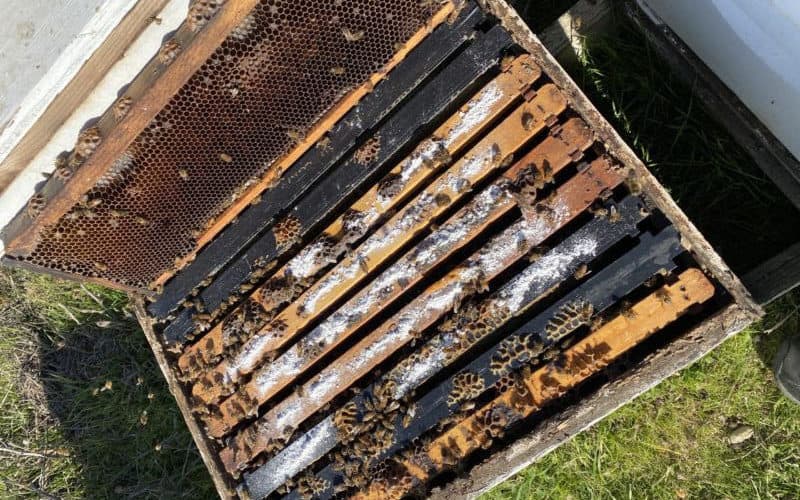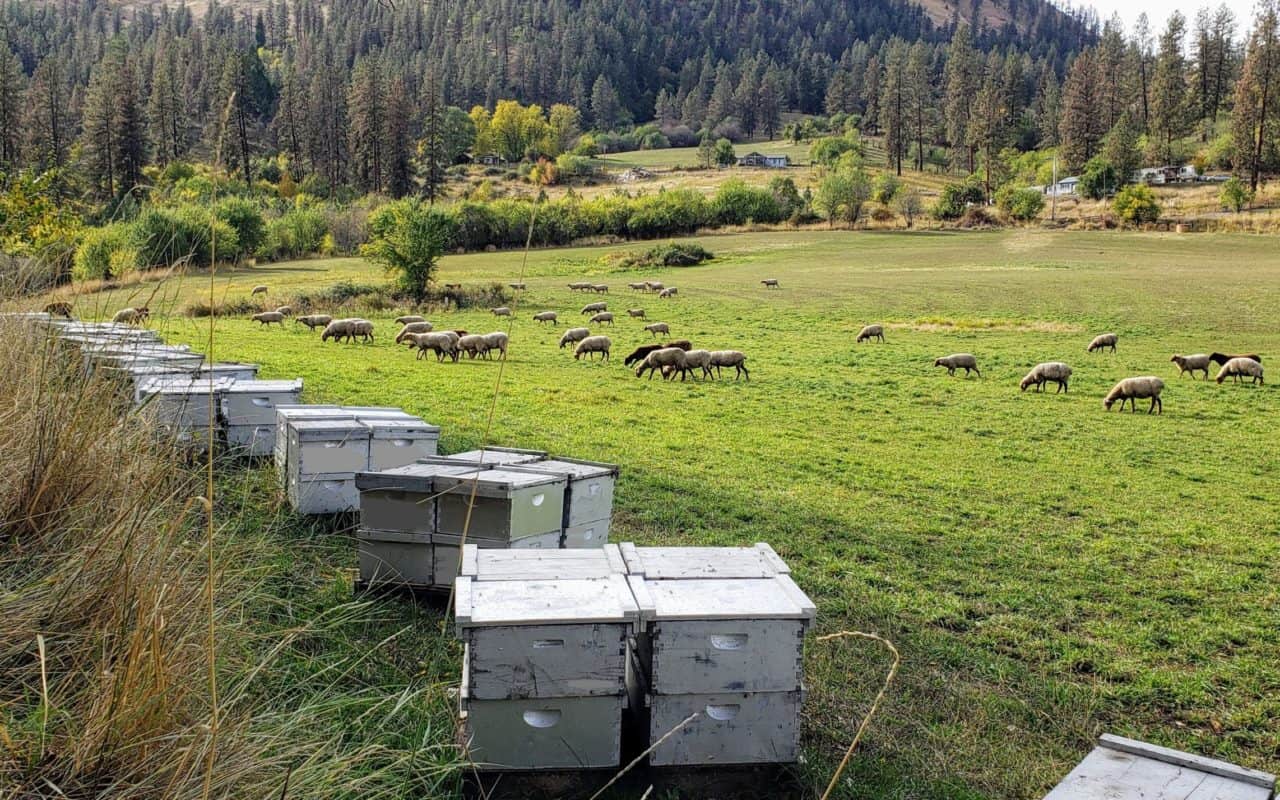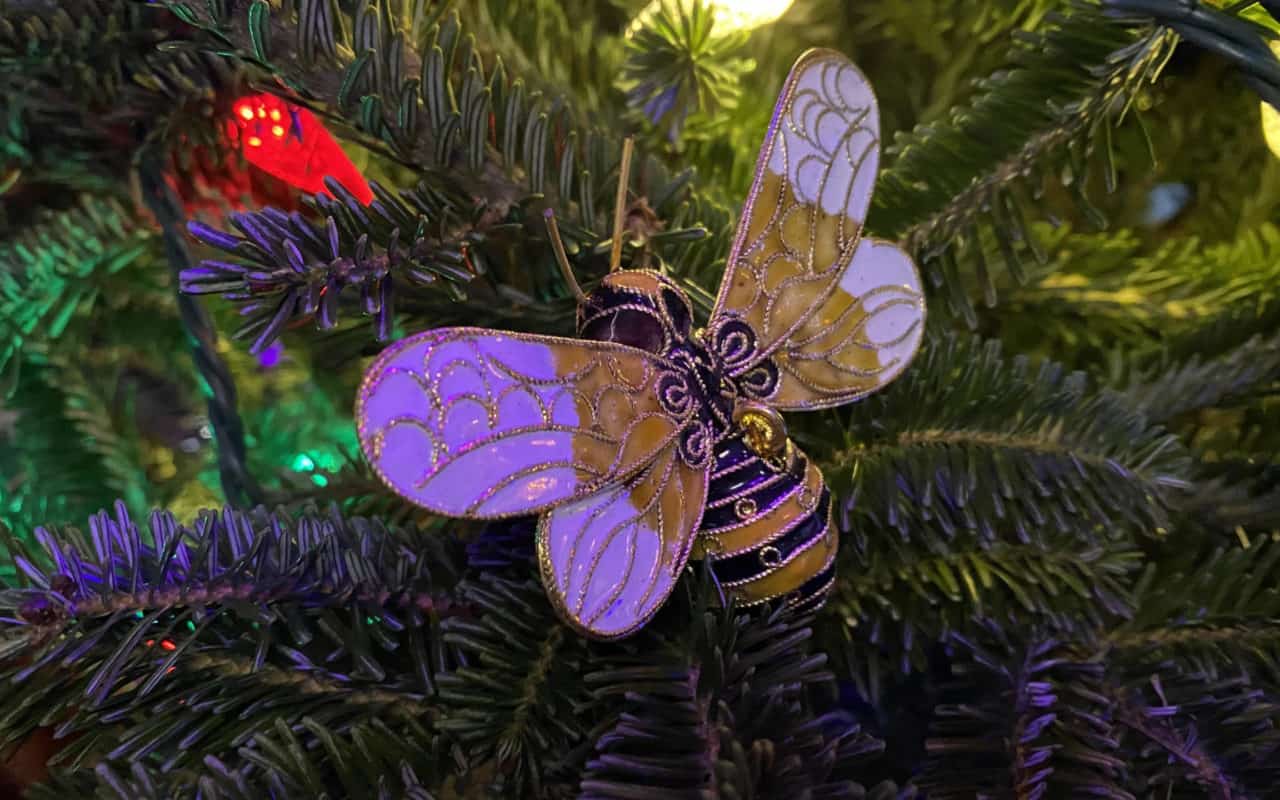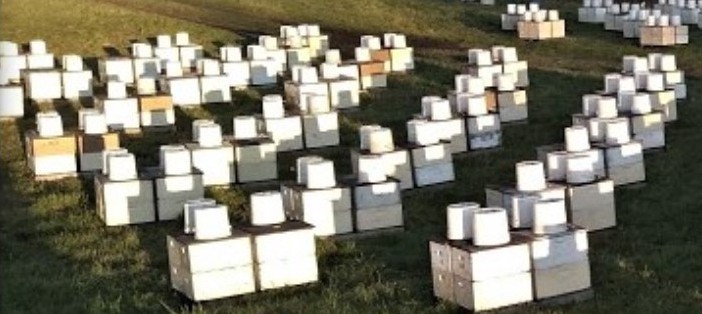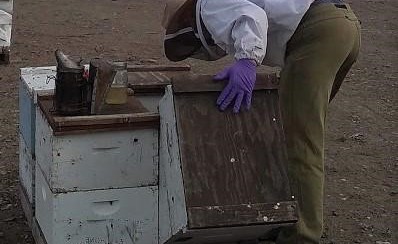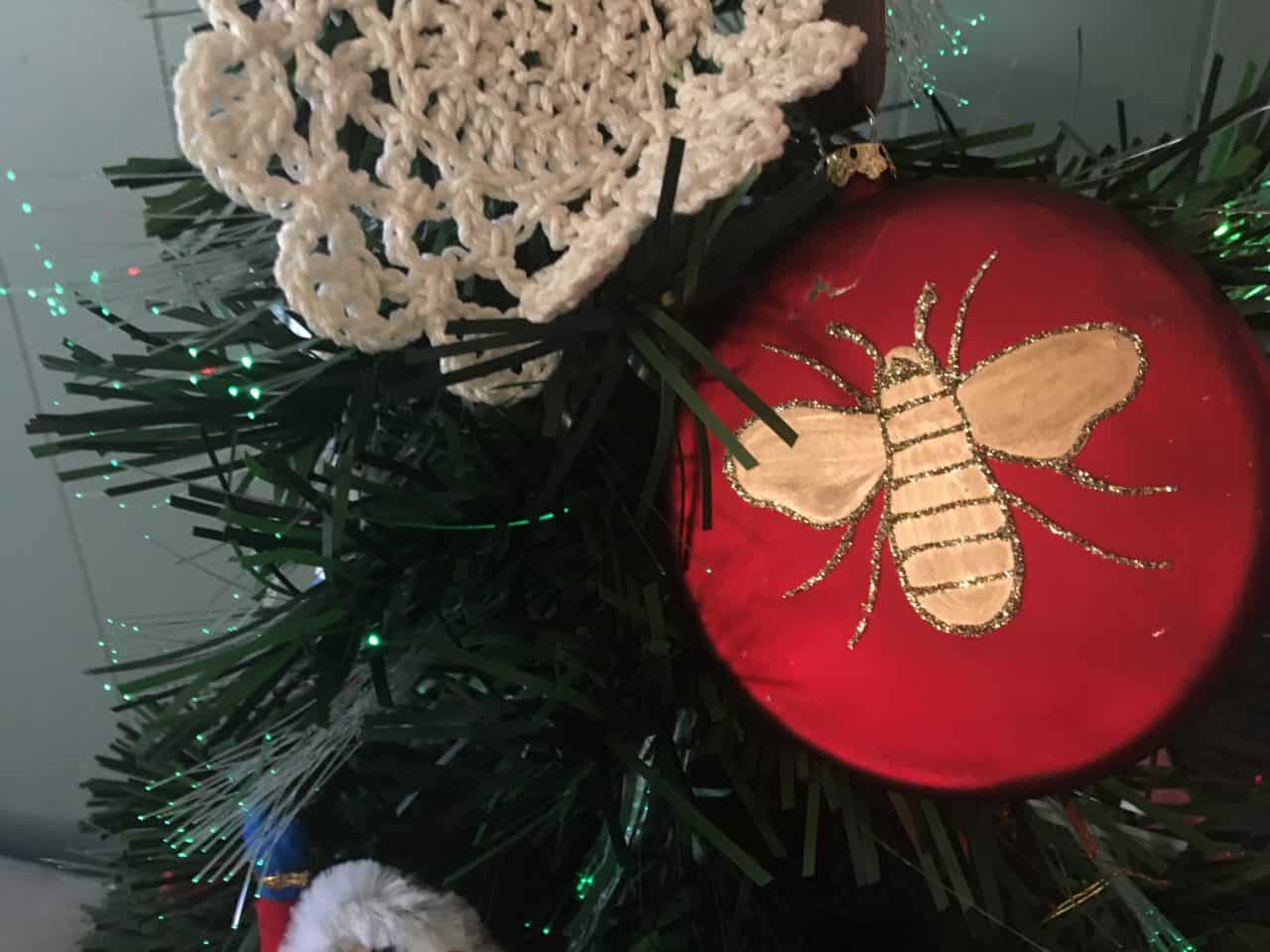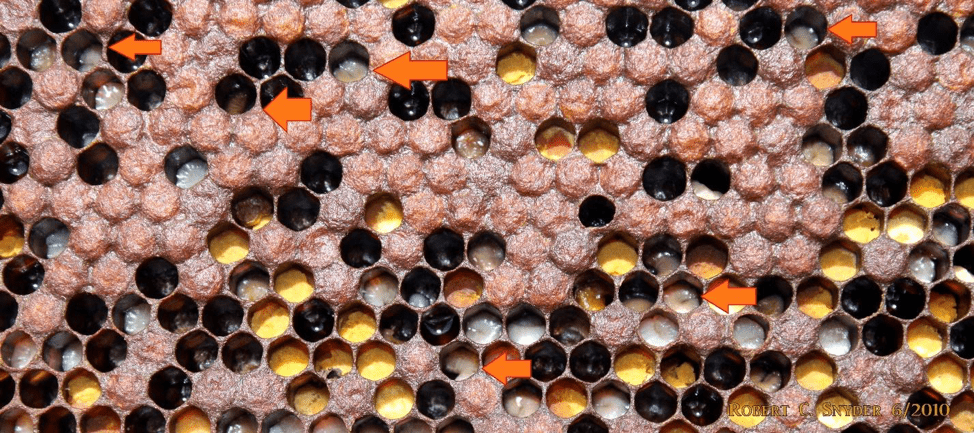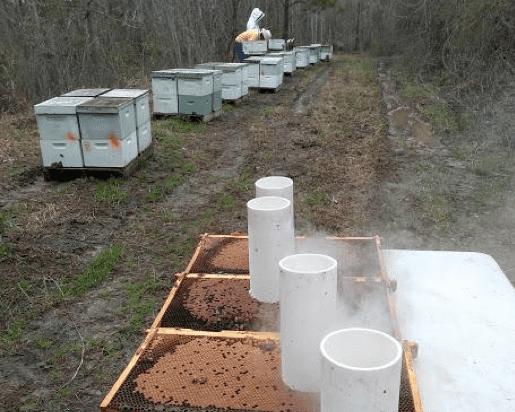If you are an almond grower, a beekeeper or simply live in Northern California, you know where to find most of America’s honey bee colonies in late January through February. Close to two million honey bee colonies come from all over the United States to pollinate the almond blooms each year. But then what? If getting bees to California is like a sprint for beekeepers, what happens after is more like a marathon. When the last almond petals fall, the beekeepers’ most intensive work period begins. Lightning Speed Honey Bee Biology and their Life Cycle In nature, honey bees reproduce on two levels. At the…
Category: Tech Teams
Field Testing the Benefits of Probiotic Supplementation in Real World Commercial Beekeeping Operations
Photo credit: BIP California Tech Team Field Specialist Matt Hoepfinger.
In light of the rise in probiotic supplementation's popularity among beekeepers, the California State Beekeepers Association (CSBA) awarded Bee Informed Partnership (BIP) funding to test the colony health benefits of probiotic supplementation in commercial beekeeping operations. To do so, we tested two commercially available probiotic products: SuperDFM, manufactured by Strong Microbials, and Mann Lake's ProDFM. Field trials were conducted between fall 2019-spring 2020 and included colonies from commercial operations in Oregon and California. For each region, three bee yards were selected, and within each yard, four colonies were randomly assigned to one of three groups: SuperDFM; ProDFM; or No supplementation Negative Control, (2 regions x…
The Bee Informed Partnership Field Specialists’ Report on 2020 Commercial Beekeeping Trends
The Bee Informed Partnership's Tech Transfer Team offers a honey bee colony health monitoring program tailored to meet the specific needs facing commercial beekeepers. The Tech Transfer Team program's Field Specialists follow commercial beekeeping operations during their yearly migrations across the country, to provide pollination services and producing honey (Figure 1). Field Specialists perform colony health inspections, on-site testing for several important honey bee pests and diseases, including the destructive Varroa mite, collect samples if additional laboratory testing is required, and consult with the participating beekeepers regarding their colony health management plan. In 2020 alone, BIP's Tech Transfer Team collectively inspected over 13,000 colonies, put…
Happy Holidays from Bee Informed Partnership!
Season’s Greetings! As the Holiday season approaches, The Bee Informed Partnership team would like to express our sincere gratitude to all of you for the support you’ve shown throughout this year! You have helped us push through many obstacles that the global pandemic has put in front of so many nonprofits, and we can’t thank you enough. With your support, BIP serves the U.S. beekeeping community through several programs: The Technical Transfer Team Program offers commercial beekeepers access to a wide range of resources and reports on the health of their colonies to help them improve on their management practices to strengthen the health of…
A roof over their heads
A colony of bees is fairly loose in their requirements of a cavity to live in. Basically they need a space of a suitable volume with a defensible entrance and enough protection from the elements so they can maintain an internal environment to survive in good health. A lid for the hive helps meet this last requirement by helping to retain heat and exclude precipitation. At its simplest, a lid can just be a piece of plywood or other material that provides coverage to the top of a hive. Beyond meeting the basic needs of the colony, beekeepers have added modifications to lid and cover…
Look Down
Separating a hive from the bottom board and tilting it forward is a useful first step before proceeding further with a colony inspections for several reasons. A tilt allows you to assess the overall weight of a hive while letting the bottom board carry the weight. Tilting also facilitates looking at the bottom bars to assess the coverage and density of bees allowing for a population estimate to be made. These are both valuable pieces of information that allow broad inferences about colony health to be made, but tilting the hive forward before proceeding further also allows you to examine the state of the bottom…
What Robbing Looks Like
Most new beekeepers find out about robbing the hard way when they either spend a little too long poking around in colonies at the wrong time of year, arrive in a bee yard already to find a frenzy of activity around hive entrances, or encounter the aftermath in the form of dead colonies and empty hives. Robbing can be particularly bad in the late summer and fall when several conditions align, leading to high potential for robbing. These triggering conditions include nectar dearth after a main flow, large colony populations with a high proportion of foragers, temperatures suitable for intense flight activity, and potential for…
Bee Informed is Wonderful, So Happy to Have Them
Holiday Greetings!, Beekeepers participating in Bee Informed programs have access to a broad network of apiculture specialists. From the Bee Health Field Specialists that provide hands-on assessments with commercial beekeepers to the lab and database techs, and subject matter experts that provide timely insights to current trends, diagnosis of observed problems, and current and best practices for fixing those problems. But this isn't just how I would describe BIP, let's hear it from Jason Hough, a nuc, package bee and honey producer in Maryland who has these words to say about the Bee Informed Partnership as he was interviewed by Eric Malcolm in the video…
BIP Tech Team Field Agents as Early Alarm Systems
In Northern California this past spring, colony growth was slow due to the cooler weather. So slow in fact, that most Queen Producers started breeding up to a month late! Additionally, the numerous fungicide applications in the orchards accumulating on forage, may have been another factor impacting colony health and growth. The conditions were so wet this year, growers had to apply more aerial sprays to control fungus. Most of these sprays were performed during the daytime and most likely increase bee exposure to fungicides, especially in standing watering holes for bees, where pesticides may be present at higher levels. A week or so into…
BIP Helps Breed Hygienic Honey Bees
Like other livestock breeders, queen producers are constantly working to improve the quality of stock they produce. When determining which colonies to graft from breeders will evaluate colonies on a variety of traits including productivity, fecundity, and temperament. Traditionally, selection has focused on breeding from colonies that produced large honey crops, reared abundant brood, and behaved in a docile manner. As pest and disease pressures have increased in recent years breeders have increasingly incorporated hygienic behavior as a criteria for selection. Hygienic behavior is a trait that helps colonies control several stressors including American Foulbrood, chalkbrood, and Varroa mites. Hygienic behavior is identified by performing…

